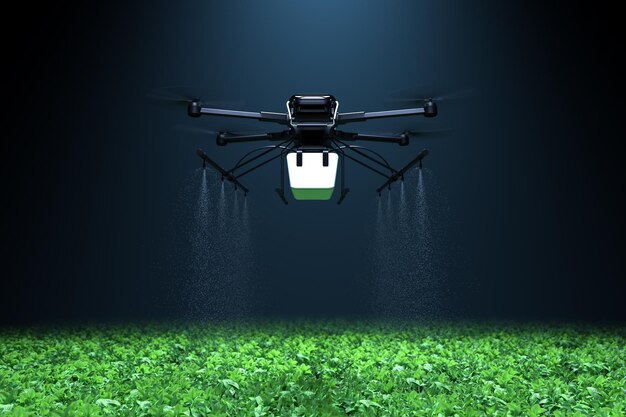
Sponsored article
In an age where drones are becoming increasingly prevalent, ensuring their security is paramount. As these devices are used for everything from recreational photography to critical infrastructure monitoring, vulnerabilities in drone communications present serious risks. By exploring advanced signal manipulation techniques, we can safeguard drones against a variety of threats. This article delves into the innovative methods being developed to enhance drone security and protect sensitive information from falling into the wrong hands.
Understanding the basics of drone communications is essential for grasping the importance of advanced signal manipulation techniques such as GNSS spoofing and detection. Drones rely on various types of signals and technologies to operate efficiently and safely. These include radio frequencies, which play a crucial role in controlling the drone remotely, as they are used for both communication with the drone and the transmission of data. The fundamental processes involve signal transmission, where commands are sent from the operator to the drone, and data transmission, which deals with the feedback from the drone back to the operator. This seamless exchange ensures that drones can perform their tasks effectively while maintaining data security against potential threats.
To delve deeper into how these systems work, consider the following aspects of drone communications:
These elements highlight the necessity of GNSS spoofing and detection techniques, which can be explored further here. These approaches are crucial to safeguard sensitive areas from unauthorized drone use, ensuring comprehensive data security and protection against signal interference.
In the world of drone security, advanced signal manipulation techniques play a crucial role in both enhancing and circumventing protection measures. One key method is signal jamming, which is often employed to disrupt unauthorized drones by overwhelming their communication frequency. This technique prevents drones from receiving commands, effectively neutralizing their threat. Conversely, encryption is utilized to secure communication channels between drones and their controllers. By encrypting signals, it becomes substantially more difficult for hackers to intercept or decipher sensitive information, thus bolstering security measures against potential breaches.
Another sophisticated technique is spoofing, which involves convincingly imitating a legitimate signal to take control of a drone. While this can be used maliciously, it’s also a valuable tool for security professionals to test drone defenses. Meanwhile, frequency hopping offers a dynamic solution by rapidly switching the communication frequency within a specific range, making it challenging for unauthorized users to intercept or disrupt the transmission. These signal manipulation techniques are essential in crafting robust drone security frameworks, addressing emerging threats while ensuring smooth operations.
As the use of drones continues to expand across various industries, the need for sophisticated drone security solutions becomes increasingly critical. Advanced signal manipulation techniques are emerging as pivotal tools in this landscape, offering robust defense mechanisms that mitigate risks associated with drone operations. One of the practical applications of these techniques can be seen in restricted airspace management, where manipulating drone signals ensures unauthorized drones are safely redirected or disabled before they pose a threat. This approach allows for seamless protection of sensitive areas like airports and government facilities. A notable case study demonstrating this involves a major urban event where signal manipulation was employed to ensure drones did not participate in disruptive activities, showcasing an effective non-invasive control over potential security breaches.
However, the security implications of signal manipulation techniques are profound. While they offer substantial benefits, there is also a risk of misuse if these capabilities fall into the wrong hands. Thus, understanding and managing such implications becomes imperative for any comprehensive drone security strategy. Further case studies from military operations reveal that incorporating advanced signal techniques not only enhances situational awareness but also significantly reduces the likelihood of drone-related incidents. As these examples illustrate, the strategic deployment of signal manipulation is instrumental not only in safeguarding assets but also in promoting the safe integration of drones into everyday life, rendering drone security solutions more robust and reliable.